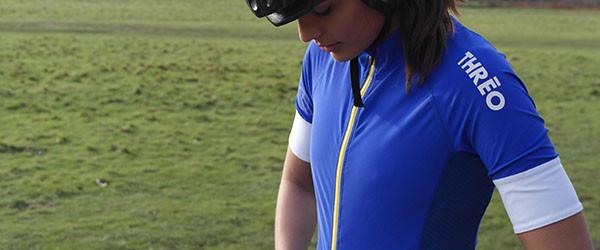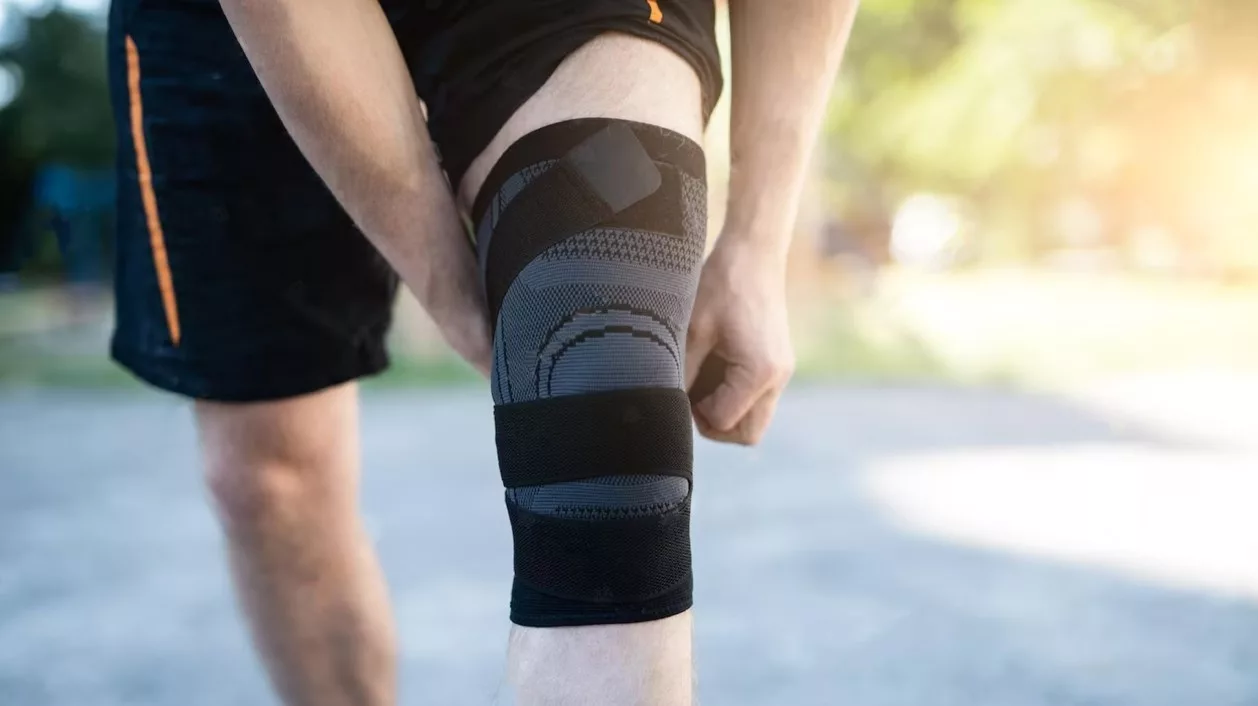
Knee braces or knee supports are invaluable devices for individuals experiencing knee injuries or knee-related conditions. They provide a unique combination of support, comfort, and healing to the knee joint, allowing for improved mobility and reduced discomfort. For athletes, active individuals, or anyone suffering from chronic knee conditions such as osteoarthritis, the right protector could significantly improve quality of life and performance levels.
Understanding Knee Braces
Knee braces serve to support and stabilize the knee joint. They work by offering a combination of compression, warmth, and stability, which can prove especially beneficial in the event of a torn ACL or other knee sprains. Essentially, they help control motion to prevent further injury while simultaneously promoting quicker recovery through improved circulation. Depending on their design, they can cater to the needs of various knee conditions and injury prevention strategies.
Factors to Consider When Choosing a Knee Support
Choosing the right one isn’t a straightforward task, it requires a deep understanding of various factors. Having undergone the process myself as an athlete, I can vouch for the importance of a well-thought-out decision process to ensure you select the most appropriate knee protector.
Understanding Your Specific Knee Condition
The cornerstone of choosing the right one starts with understanding your specific knee condition. The spectrum of knee conditions varies from common ones like arthritis, osteoarthritis, and patella injuries to more severe cases such as torn ACL or bone bruises. Each condition demands a tailored approach in terms of the support and protection level required, hence understanding your knee’s requirements can better guide your choice of brace.
The Purpose of Use
Drawing from my own experience, they are most beneficial when used correctly depending on the situation. While some people use them as a preventive measure in sports and physical activities, others need them for injury recovery or managing chronic knee conditions.
Determining the Correct Fit and Level of Compression
The effectiveness of a knee protector greatly depends on how accurately it fits your knee. The right one should fit snugly but not too tightly so that it cuts off circulation. The level of compression should provide comfort without causing additional pain or discomfort. If the brace is ill-fitted, it could lead to additional complications such as reduced blood flow and discomfort.
Consideration of Activity Level and Intended Use
Your lifestyle and the level of physical activity you regularly engage in will have a large impact on the type that will best suit you. If you’re a highly active individual who participates in demanding sports, an adjustable knee brace with strong elastic straps would be suitable. Conversely, if your activities include yoga or pilates, a padded brace with cushioning protection would offer the right amount of mobility and comfort.
The Best Knee Braces for Specific Needs
Depending on individual demands, certain braces may prove to be more effective than others. Whether you’re an athlete needing additional support during strenuous activities, suffering from a specific knee condition, or someone who enjoys low-impact activities like yoga or pilates, there’s a protector perfectly designed for your unique needs.
Threo Padded Knee Brace
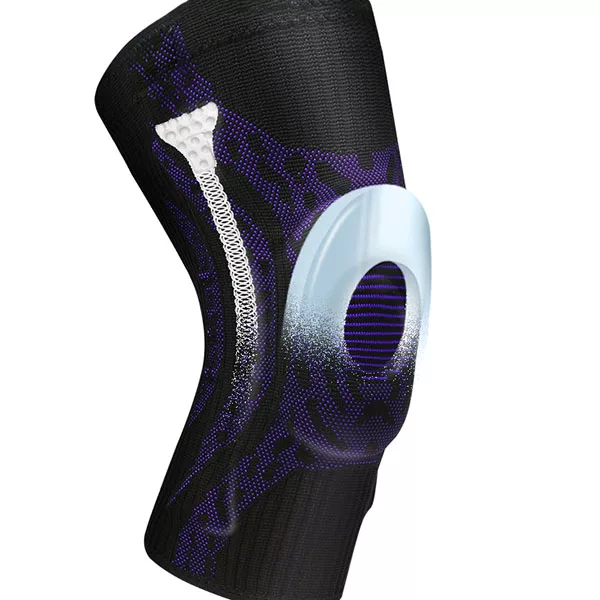
The knee brace is specifically designed with a pad and cushioning protection that acts as a buffer for your knee joint. Its primary advantage lies in the precise balance it provides between flexibility and stability. While yoga and pilates require you to have a full range of limb motion, they do not eliminate the requirement of having a stable knee joint. Having a brace like Threo’s works to ensure that your knee is protected while still allowing the necessary freedom of movement.
The pad surrounding the kneecap in Threo’s knee protector guarantees not only reliable support for the knee but also provides cushioning protection as you execute various movements and postures. This becomes especially pertinent for poses that put pressure on the knees or for exercises carried out on harder surfaces.
Moreover, it works to evenly distribute pressure across the knee joint. It’s an essential feature that helps to reduce inflammation and swelling, two common occurrences even in low-impact exercises like yoga and pilates. Alongside this, the padded brace aids in improving blood flow around the knee, making it beneficial for quicker muscle recovery after your workout.
Knee Support with Adjustable Elastic Straps
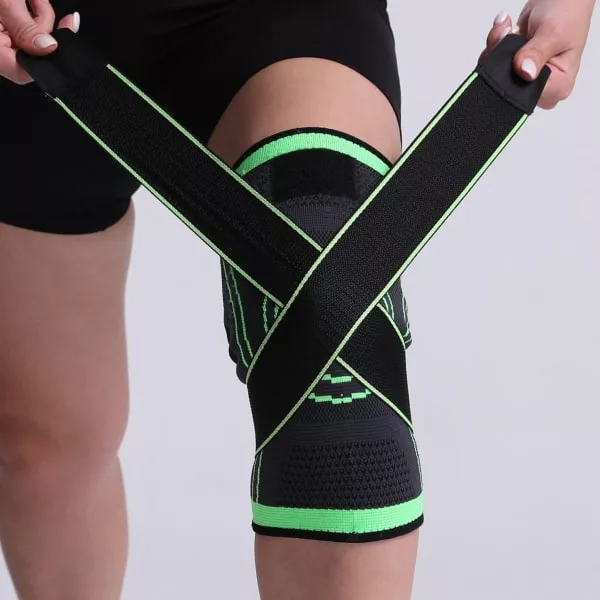
In cases demanding a stronghold, THREO’s knee brace promises stability with its fully adjustable straps. It especially holds true in high-intensity workouts or sports engagements where the knee joint is under a lot of pressure. It offers targeted relief for intermittent or constant knee pain while promoting muscle recovery by improving circulation. The velcro straps in this brace offer joint stability and simultaneously reduce the risk of injury, making it ideal for high-stress activities such as baseball, soccer, football, jogging, and even dancing.
The adjustable nature of the elastic straps allows you to have a tailored fit. Everybody is different, which means knee sizes and shapes differ. With adjustable straps, you can tune the fit of the brace according to your unique anatomical makeup, ensuring that it’s neither too tight nor too loose. Achieving the perfect fit can make a monumental difference to its effectiveness and comfort, allowing for optimal muscle support without cutting off circulation.
Moreover, adjustable braces provide adaptability for varying degrees of support at different stages of recovery or strain. A heavy workout may require you to tighten the brace for extra support, while a relatively lighter day might allow a more relaxed fit. This adaptability ensures that your knee enjoys appropriate support at all times.
Threo Knee Support
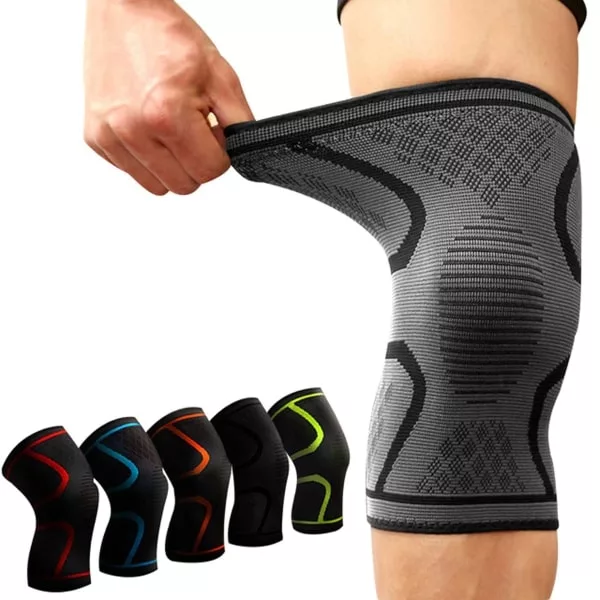
For those requiring tight support without compromising on comfort, a knee brace with breathable compression fabric is ideal. In addition to supporting stabilization across activities, it cleverly avoids the risk of itchiness common to standard neoprene supports.
Despite its snug fit, the breathability ensures that your skin remains dry and comfortable. It’s a common problem with some protectors that may cause excessive sweating or trap heat, leading to discomfort. Knee support featuring breathable fabric eliminates such concerns and optimizes comfort throughout use.
What truly sets these braces apart is their versatility. Their optimal muscle support makes them an ideal choice for use during varied activities — from rigorous workouts to casual everyday activities.
Conclusion
Ultimately, choosing the best support depends majorly on your specific needs and the condition at hand. With various options available, careful thought must be put into understanding the protection level required, the quality of materials used, the fit of the brace, and the purpose it will serve. By considering these factors, you can opt for a knee protector that not only reduces discomfort but aids in the recovery of your knee condition.
Remember, it’s always helpful to look for customer reviews and consult healthcare professionals when selecting your brace. After all, it’s not just about making a purchase – it is about making a decision that affects your health and well-being.
Sources
https://www.ncbi.nlm.nih.gov/pmc/articles/PMC3445064/
https://www.sciencedirect.com/science/article/pii/S1877056819301756
https://www.ncbi.nlm.nih.gov/pmc/articles/PMC6829004/
FAQ
How to put a knee brace on?
To put on a brace, you need to start by loosening all the straps and opening up the brace. Then, place your leg in the brace, ensuring your knee aligns with the hinge or cut-out area of the brace. Fasten the straps starting from the bottom and working your way up. Each strap should be snug but not tight enough to restrict circulation.
Is it ok to wear a knee brace all day?
It depends on the advice of your medical professional and the nature of your knee condition. Some people may need to wear a brace all day, while others might only require it during physical activities. Continuous wear can sometimes lead to skin irritation, so it’s crucial to follow the guidance of professionals.
How to wear a knee brace?
It should be worn over a thin layer of clothing, not directly on the skin to avoid irritation. It should align properly with the kneecap, with the hinges or supports situated on either side of the knee. Straps should be fastened firmly but comfortably.
How tight should a knee brace be?
A brace should be tight enough to stay in place and provide the necessary support without sliding down. However, it shouldn’t be so tight that it causes discomfort, restricts movement, or cuts off circulation. If you can slide two fingers under the strap, that’s generally a good tightness level.

